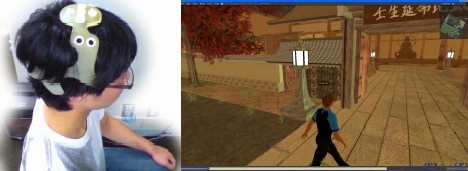Human Shields in Cyberpunk 2020
Author: sparky.
The asshole attacked me with a back hand. I swung my right arm and connected with his kidney. He promptly buckled with a scream. That was when I saw his partner with the Assault Rifle. ‘Shit. This is going to be a bad day.’ I thought. As his partner raised the muzzle of the weapon to point it at me I acted. I reached and grabbed the punk I’d just nailed by the back of the shirt and held him in front of me just as his parter opened with a three round burst. The bullets made wet smacks as they pummeled the body in front of me. After the guy fired I pulled out my AMT and blew his fool head off, and left the shield to die in a pool of blood.
Johnny Walker – Militech
Some times you are looking down a barrel with no where to go. So what do you do? You attempt to find cover. And in some close range fire fights the best cover around can be the bodies of living or dead people. I know, it harks back to memories of Arnold riding the escalator up and using a human shield against fully automatic weapons. Pretty cool, a little messy, but pretty cool.
Well, guess what. I was CC’d with a message for Rajeen Nabid and the message had a direct quote for RTG on how this would be done! So here it is a little more fleshed out and taking armor into account. (Which believe it or not, is actually easy.)
Here we go!
Human Shield
SP = Body Type Modifier (BTM)
SDP = 4xBody (i.e. Body of 7 = 28 (7×4=28)
These are estimates from RTG (pretty good ones too). An unarmored shield would have these types of values. And for all intents and purposes this would be treated as cover. Damage that penetrates the SP of the Shield will be passed on to the SDP of the body (4xBODY). So if the person has a high body there is a lot of damage that can be stopped. But, once the Shields SDP are reduced to zero the shield ins no longer effective and you are also wearing a large portion of the shield as there won’t be much left.
Now, “Great!” you’re saying. “Next time I get my self into a fire fight… I’ll just grab the first person I see and use them as cover!” Well, it does work that easily for dead or unconscious shields. But, it’s a different story when that shield is still conscious and alive! If the person you wish to hide behind is not incapacitated you must first make a grapple roll to grab the person. Once you have grappled the person you may hold him in front of you. You must also roll a grapple roll every turn you wish to use him/her so long as they are alive and awake.
Armored Shields
Now What do you do if you have armor on the shield. I use the RTG armor Layering rules for the body only! The shield does not count towards armor layering because it is actually treated as cover and not armor! This is what I came up with.Now, the first step is to figure the total SP of the Human Shield. This can be done by using the rules for armor laying (Which can be found on www.cyberpunk2020.de (At least….That’s where I found them on the net)).
The way this works is first find the SP of the armor that the shield is wearing and the SP of the body (BTM). Subtract the lower of the SP from the larger and cross reference the table. Add the number of the bonus to the LARGER of the SPs. Chances are the low SP of a human body is not going to make much of a difference.
| Difference in SPs |
Bonus Number |
| 0-4 |
5 |
| 5-8 |
4 |
| 9-14 |
3 |
| 15-20 |
2 |
| 21-26 |
1 |
| 27+ |
0 |
Once you have figured the SP of the Shield you are ready. Let the mayhem begin. Here’s an example to illustrate the point.
Example
John Doe is using a human shield. The BTM of the shield is +2 so the SP of the shield is 2. The shield is wearing a Kevlar T-Shirt (SP-10). Subtract 2 from 10 to get 8. Cross referencing the table we see that he gets a bonus of +4. This number is added to the LARGER of the two SPs to give 14SP. The target must take over 14 points of damage for the SDP of the target to take any damage. Makes for a pretty good shield huh? John Doe is being shot at by Punk Boy. Punk Boy is using a heavy SMG. He fires and hits the Human shield. He rolls for his damage and gets 17 points. The armor of the Shield stops 14 of it the other three go through to the SDP of the shield. The shield has a body of 8 so the shield can take 32 points of damage before being reduced to so much chopped liver. John Doe has a good thing going. Unless Punk Boy pulls out the big guns.
So, as you can see there are a lot of good benefits to having a human shield. Thanks for the idea!
-sparky
 In my little series of Cybepunk tech allready available today: The brain-computer interface. The very core of every cyberpunk book – the ability to plug yourself into the matrix.
In my little series of Cybepunk tech allready available today: The brain-computer interface. The very core of every cyberpunk book – the ability to plug yourself into the matrix.